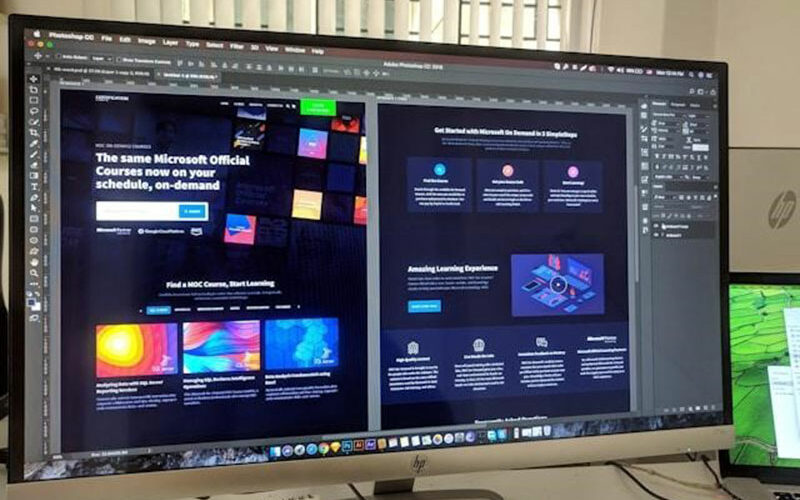8 Website Design Elements That Boost Conversions

A website is a formidable asset for drawing in traffic and escalating business for your product or service. Beyond its enticing aesthetics, a website should feature exceptional functionalities and attributes to grab online users’ attention.
While attracting traffic to your site is imperative, transmuting that traffic into leads takes precedence. The era of customers serendipitously landing on your website and reaching out via a contact form is over. Winning customers’ attention has become more challenging than ever, underscoring the importance of search engine optimization (SEO) campaigns and making social media marketing a do-or-die tactic.
Shifting focus back to the website, if a shallow conversion rate plagues your site, it would be judicious to seek out a proficient web design company to weave in crucial elements into your site’s design. The following are design considerations that will optimize the chances of converting traffic into leads on your website:
Clear Navigation
The control to steer your website visitors in any direction rests entirely with your web designer. Navigation is an integral part of boosting conversions. The elements you incorporate in your menu bar can significantly impact a visitor’s experience on your site, either positively or negatively. They also serve as an effective method to explicitly convey what your business is about. You can specifically fine-tune the navigation, a vital aspect of website design, to enhance conversions.
When you’re constructing a website with the objective to maximize conversions, it’s essential to reduce clutter on your primary navigation menu. If your top header consists of five different dropdowns, each presenting seven different choices, it complicates the process for visitors to decide where to navigate. Strive to condense your navigation to a handful of options, and ensure that at least one of these choices leads to a contact page or a click-to-call link.
Intuitiveness
Understanding that every visitor to your website may not have the interest or time to explore its entirety is crucial. They may seek specific information, such as a contact number or address, so display vital details where they can be easily located.
We’ve all encountered situations where finding necessary information on a website has proven difficult, leading to frustration. These experiences can be irritating and may result in visitors leaving your site prematurely, with a low likelihood of returning or engaging in business with you. Get in touch with Bizango, a web design agency for assistance with creating an intuitive website that meets the needs of your visitors.
Incorporate Images and Graphics
Graphics and images should not be haphazardly inserted just to occupy a space; each one needs to be meticulously selected. For instance, corporate stock photos can often make your brand appear less authentic due to their overly-staged nature. Strive to only incorporate those that are significant and align with your brand.
While stock photos may occasionally be a valuable resource that can amplify your brand message, be precise about the styling that suits your brand: the elements they depict or symbolize, the colors they should carry. When formulating your visual branding, your designer likely recommended a collection of photos with a certain style, aiming to discover similar ones.
If feasible, acquiring professionally taken brand photos is even more beneficial. Just ensure the photo you employ on a specific page or section of your website genuinely helps visitors in being persuaded to take the next step in their journey.
If you’re uncertain, have no image that aligns with your brand. It’s perfectly acceptable to have just one or two images per page and maintain ample white space. This prevents overcrowding the area or diverting attention from your call to action.
Establish Credibility Through Social Validation
Social proof is the process of portraying that others find value and recommend your products or services, which establishes trust and prompts new customers to engage. Integrating testimonials or reviews into your website is a widespread method to manifest this.
This doesn’t necessitate a full landing page or extensive section; it could simply be a compact scrolling banner displaying brief endorsements or testimonials from contented customers. Word of mouth remains an influential factor in driving new registrations, and providing social proof on your website is an effective surrogate for such personal referrals.
Mobile Usability and Quick Loading Times
Enhancing your website for mobile accessibility and speed has become crucial in increasing your conversion rates, and the reasons aren’t as simple as you might presume. Firstly, enhancing your website for mobile use establishes an effortless experience for users accessing your site from their smartphones. This involves ensuring that the text is legible, images load correctly, and forms can be filled using their phones, among other considerations. This prevents users from abandoning the conversion process due to a complex mobile navigation experience.
Secondly, boosting your website’s speed implies that your pages will load without delay. The standard industry guideline suggests that every page should load within two seconds or less. Any additional delay increases the likelihood of users abandoning the site.
Information Accessibility
Every visitor to your website may not have the interest or time to explore it fully. They might just be looking for specific details like a contact number, address, or a particular piece of information. It’s crucial to make essential information readily visible and easily accessible. We’ve all faced the frustration of struggling to find required information on a website. Such an experience is, at the least, irritating, leading to an unhappy visitor. A dissatisfied visitor is unlikely to spend much time on your site, let alone return or consider doing business with you.
Engaging and Persuasive Communication
Upon arriving on your website, visitors should be immediately greeted by a distinct and persuasive message that resonates with them. This statement should lucidly illustrate your business operations and the potential advantages for the user. Ensure your communication is succinct and comprehensible, paired with an unambiguous call to action guiding the user on the subsequent steps.
Use the White Space
The blank areas on a page, often referred to as negative space, are the sections that lie between the sidebars, content, header, text, and paragraphs. These spaces are typically left empty, contributing to a clean, well-arranged, and readable website design.
However, it’s crucial to adhere to the guidelines of maintaining this white, or negative, space. Enhancing your website’s influence on the user involves a strategic balance of positive and negative space. This approach improves user experience and presents concepts more compellingly than clustering everything on one side.
Endnote
A website that effectively converts visitors into customers is crucial for any business striving to make its mark online. By honing in on eight significant aspects of web design and development, it’s possible to build an aesthetically pleasing site and, more importantly, persuade visitors to become customers. With a strategic approach and some diligence, your website can transform into a potent instrument propelling your business towards growth and success.
- Unlocking Efficiency: Top CSS Generators To Try - May 4, 2024
- What Is Rust Used For? A Guide to Its Applications - May 4, 2024
- Simplifying Video Editing: Creative Apps Like Kapwing - May 3, 2024








